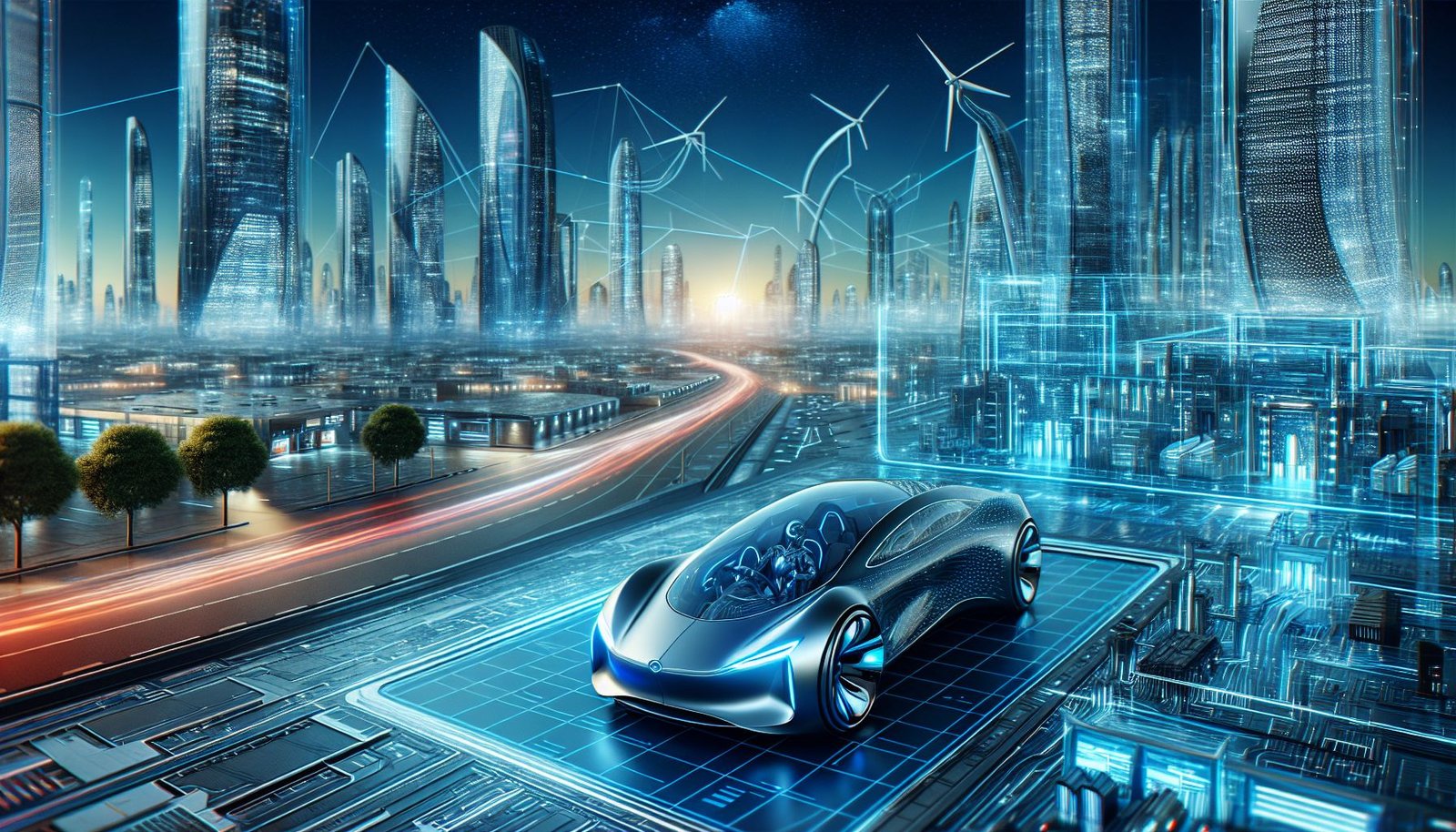The Rise of Silent Mobility Solutions
The emergence of silent mobility solutions marks a significant turning point in the transportation sector, addressing the growing concerns about noise pollution in urban environments. Electric vehicles (EVs), e-bikes, and other low-noise transportation methods are gaining traction as viable alternatives to traditional gasoline-powered vehicles. The reduction of noise pollution through these technologies offers a transformative impact on the quality of life in densely populated areas, where incessant noise has become a common complaint among residents.
One of the primary advantages of adopting silent mobility solutions is their ability to enhance public health. Studies have demonstrated a direct correlation between high noise levels and various health issues, including stress, anxiety, and sleep disturbances. By integrating electric vehicles and e-bikes into city infrastructures, municipalities can create quieter spaces that not only improve the auditory environment but also promote healthier lifestyles. The tranquility achieved through reduced noise pollution leads to a more serene urban atmosphere, benefiting citizens’ mental and physical well-being.
Innovations in silent mobility are reshaping transportation landscapes around the globe. For instance, advancements in battery technology have made electric vehicles more efficient and affordable, further encouraging their adoption. Similarly, the rise of e-bikes has revolutionized personal mobility, offering a sustainable and quieter alternative for commuters and recreational users alike. These developments are supported by government policies aimed at reducing carbon footprints and promoting eco-friendly practices. As cities transition towards embracing silent mobility solutions, the potential for a cleaner, quieter, and more sustainable urban environment becomes increasingly tangible.
Ecological Benefits of Sustainable Mobility
The adoption of sustainable mobility practices offers significant ecological advantages that are crucial in combating climate change and preserving the environment. One of the most prominent benefits is the reduction of carbon footprints associated with transportation. Traditional modes of transport, such as gasoline-powered vehicles, contribute heavily to greenhouse gas emissions. In contrast, sustainable mobility solutions, including public transit, cycling, and walking, emit minimal or no emissions, significantly lowering the overall carbon output. Furthermore, the electrification of transportation systems, when powered by renewable energy sources, presents an effective strategy to decouple mobility from fossil fuels, further mitigating climate change impacts.
In addition to reducing greenhouse gas emissions, sustainable mobility practices also play a crucial role in enhancing air quality. Vehicles that rely on fossil fuels generate harmful pollutants, which can lead to respiratory issues and other health concerns for communities. By shifting towards cleaner transportation options such as electric vehicles or encouraging active transportation methods like cycling and walking, cities can significantly decrease levels of air pollution, benefitting public health and creating a more livable environment.
Beyond emissions and air quality, sustainable mobility contributes to the conservation of natural habitats. Urban sprawl and the construction of extensive road networks often lead to habitat destruction and fragmentation, impacting local wildlife populations. Implementing public transport systems, pedestrian-friendly infrastructures, and cycling paths encourages compact urban development, which preserves green spaces and protects biodiversity. Various initiatives and policies, such as promoting electric vehicles, incentivizing public transport use, and investing in sustainable infrastructure, are essential to facilitate this transition.
As individuals and communities become more aware of the ecological benefits of sustainable mobility, they can actively engage in decision-making processes that promote these practices, leading to a healthier planet and a more sustainable future.
Economic Advantages of Low-Impact Transportation
Adopting low-impact transportation options offers numerous economic benefits for individuals and communities alike. One of the most apparent advantages is the substantial cost savings associated with reduced fuel expenses. Traditional vehicles contribute significantly to household budgets through fuel costs, maintenance, and repairs. By switching to electric or hybrid vehicles, or utilizing public transportation systems, individuals can minimize their fuel expenses significantly. In many cases, electric vehicles can also enjoy lower maintenance costs due to fewer moving parts and less wear and tear compared to conventional combustion engines.
Additionally, communities that invest in low-impact transportation infrastructure, such as bike lanes and electric bus systems, often experience reduced expenditures on road maintenance. These sustainable options lessen the wear on traditional infrastructure, leading to significant long-term savings. These savings can then be reallocated toward other essential services or improvements within the community, creating a cycle of economic benefit.
Beyond individual and community savings, the promotion of green transportation solutions is pivotal for stimulating job creation in the tech and transport sectors. As demand for electric vehicles and associated infrastructure grows, there is a corresponding increase in employment opportunities within these innovative industries. From manufacturing to maintenance and software development for smart transportation systems, the potential for job creation is substantial.
Moreover, governments worldwide increasingly recognize the importance of encouraging low-impact transport through various incentives. Tax credits, rebates, and subsidies are extended to both businesses and individuals for adopting eco-friendly transport solutions. These incentives not only make sustainable choices more financially feasible but also support broader environmental goals. By embracing low-impact transportation, society moves toward a more vibrant economy, bolstering innovation while ushering in an era of eco-conscious mobility.
Achieving a Balanced Approach to Mobility
In the pursuit of a balanced approach to mobility, it is crucial to consider how silence, ecological sustainability, and economic feasibility intersect. To build comprehensive mobility systems that cater to the needs of society while minimizing environmental impact, urban planning plays a pivotal role. Thoughtful design of urban spaces can encourage the integration of various modes of transport, including public transit, cycling, walking, and electric vehicles. By reducing reliance on personal automobiles, cities can not only lower noise pollution but also enhance air quality and foster healthier communities.
Public policy frameworks are equally vital in promoting sustainable mobility. Policymakers can incentivize the development of eco-friendly transportation solutions and ensure funding for sustainable infrastructure, such as bike lanes and pedestrian walkways. Policies that support the adoption of electric vehicles, along with the establishment of charging networks, can further enhance the viability of these modes of transport. Additionally, implementing zoning regulations that facilitate mixed-use developments can create environments where people can live, work, and play without needing to rely on cars, thereby fostering a more sustainable urban ecosystem.
Community engagement is another cornerstone of achieving a balanced mobility approach. Encouraging local stakeholders, including residents, businesses, and advocacy groups, to participate in transportation planning can lead to more effective and accepted solutions. Workshops, town hall meetings, and feedback surveys can serve to gather insights and foster collaboration. When communities feel a sense of ownership over their mobility choices, they are more likely to embrace and support sustainable practices.
Ultimately, fostering a mobility system that harmonizes silence, ecology, and economy requires a multifaceted strategy. Such efforts must prioritize not only technology and infrastructure but also the needs and input of the citizens who engage with these systems daily. By envisioning a future where mobility is fundamentally aligned with societal and environmental needs, we can pave the way for a sustainable and prosperous world.


No responses yet